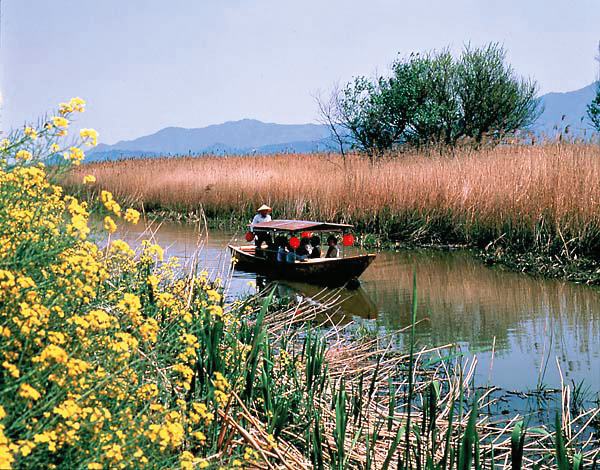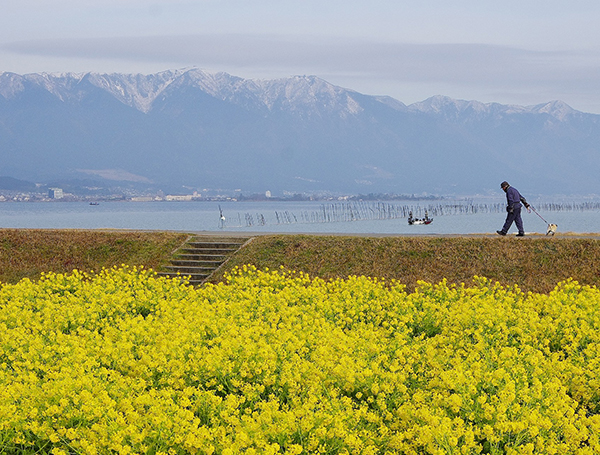JAPAN, ASIA
Lake Biwa
Lake Biwa is located on the island of Honshū and has an area of 674 km². The lake is very narrow in the southern part and rather long. The deepest point is 103 meters in the north-west at the mouth of the Ado River which drains into Lake Biwa. The average depth is 43 meters in the northern part, but only 4 meters in the southern. The catchment area is quite huge for the small water body, covering 3.174 km², about 96% of the area of the surrounding Shiga Prefecture.
What makes it special
Lake Biwa is the largest Lake in Japan and evolved from a tiny lake that formed about 4 million years ago. It is thus one of the “20 ancient lakes”, estimated to be the 13th oldest lake in the world.
Protection status
· Ramsar Site 617, Wetland of International Importance
· National Park - Quasi
· Wildlife Protection Area

Biodiversity
Lake Biwa boasts one of the world’s oldest uninterrupted ecosystems, fostering over 1.000 documented species, including approximately 60 endemics. The lake is a vital habitat for water birds, attracting around 5.000 annually. Among its 46 native fish species, 11 are endemic or near-endemic, encompassing Cyprinids, Loaches, Gobies, Silurid Catfish, Cottids, and the debated Biwa Trout. Mollusk diversity includes 38 freshwater snails and 16 bivalves, with 19 and 9 being endemic.

Local Communities
Lake Biwa is the water source for about 14.5 million people in the Kinki region, including the neighbouring cities of Kyoto and Osaka – about 10% of Japan’s population. Shiga Prefecture surrounds this mother lake. Historically, Lake Biwa has played a strategic role in both water and land, and covering 1/6th of the prefecture, it is a symbol and pride of the people of Shiga. A symbiotic way of life between nature and man has existed here for more than 1.000 years.
Threats
The biodiversity of Lake Biwa faces significant threats, with 60% of endemic taxa and over half of indigenous fish and mollusk taxa classified as critically endangered, endangered, vulnerable, or near threatened. Alien fish species, particularly the largemouth bass and bluegill from the U.S.A., pose the greatest threat, designated as Invasive Alien Species by the Japanese Ministry of the Environment. Other serious threats include river and lake shore improvements, restructuring of paddy fields, and changes in lake water level management rules, leading to habitat deterioration and migration disruption for indigenous fish. For mollusks, the main threats include changes in lake water level management, lake shore improvements, water pollution, river improvements, and paddy field restructuring.

Our Work
The International Lake Environment Committee Foundation (ILEC) was established to facilitate the exchange of international knowledge and promote research for the sustainable management of lakes and basins worldwide. With a vision centered on the vital role of lakes, constituting around ninety percent of Earth’s surface freshwater, ILEC collaborates globally with academic, administrative, and private sectors to address critical conditions and potential impacts from global warming on lakes. Additionally, ILEC fosters international cooperation and human resource development through initiatives like the World Lake Conference and various training and educational activities.
The International Lake Environment Committee Foundation



